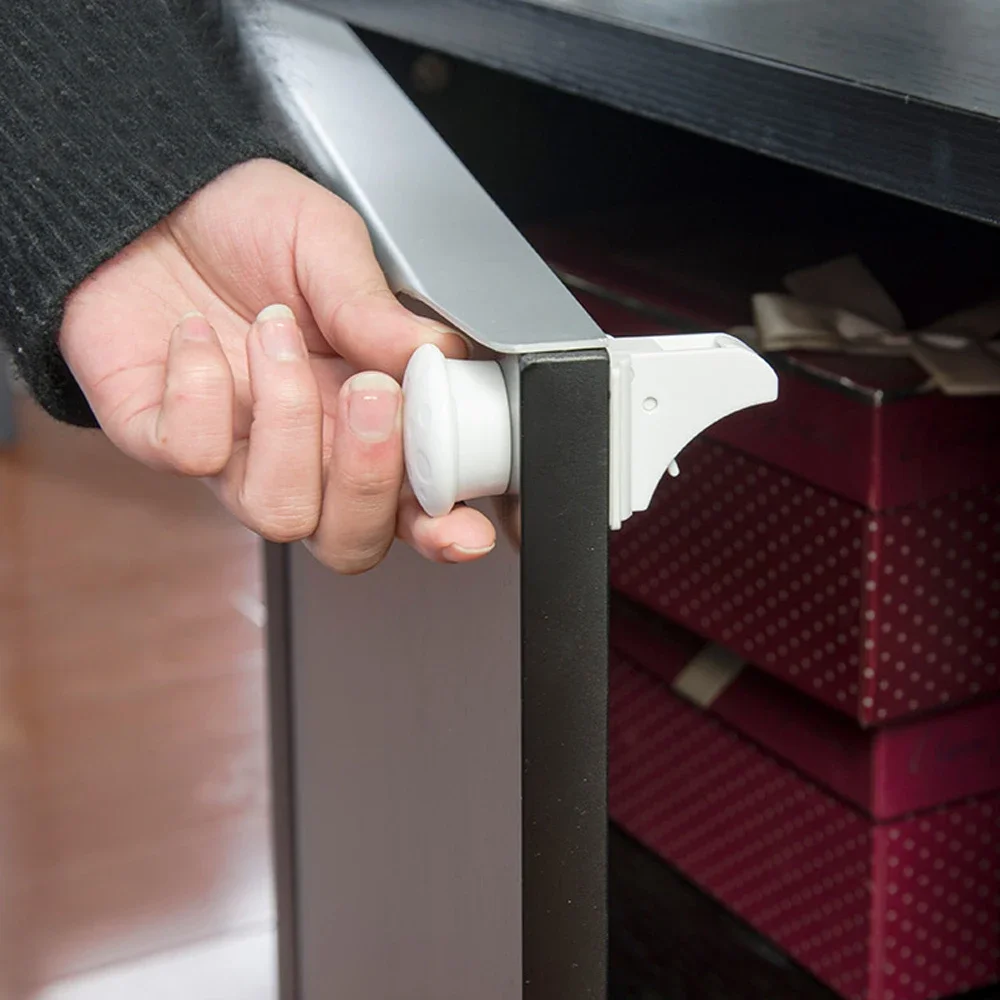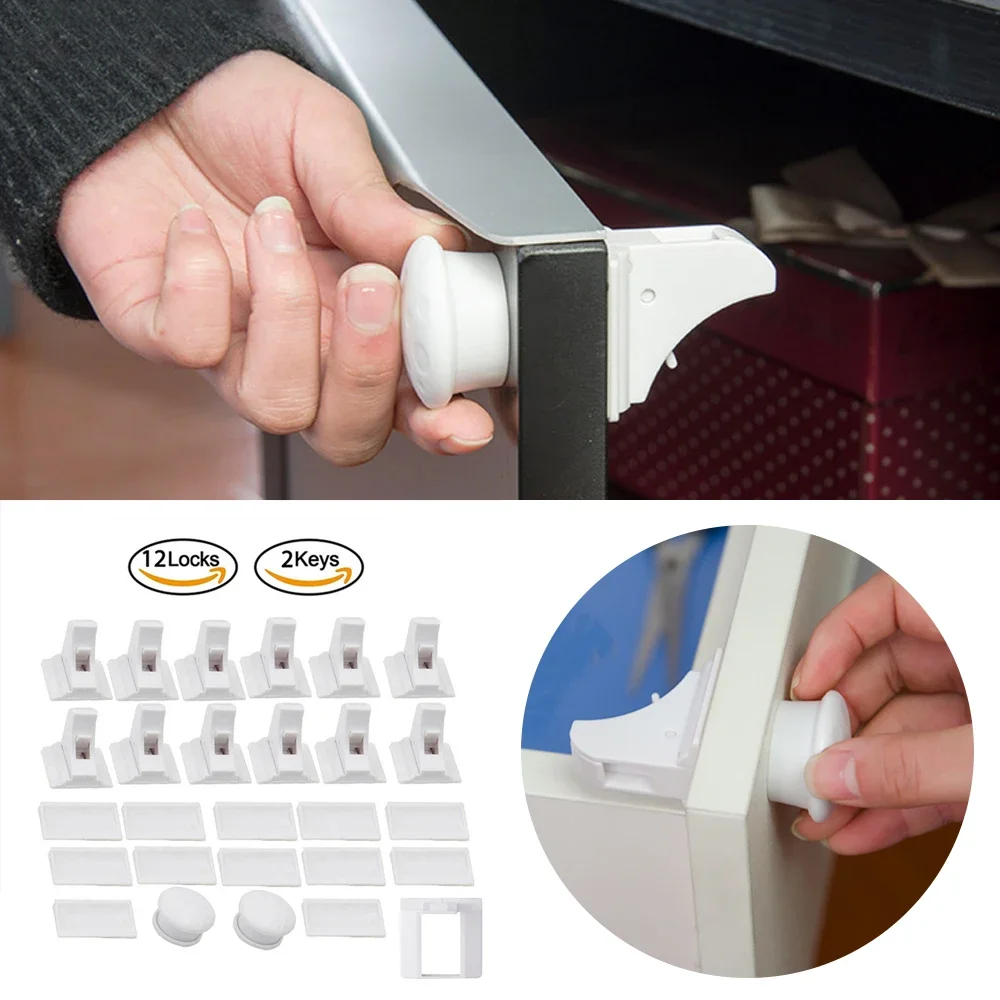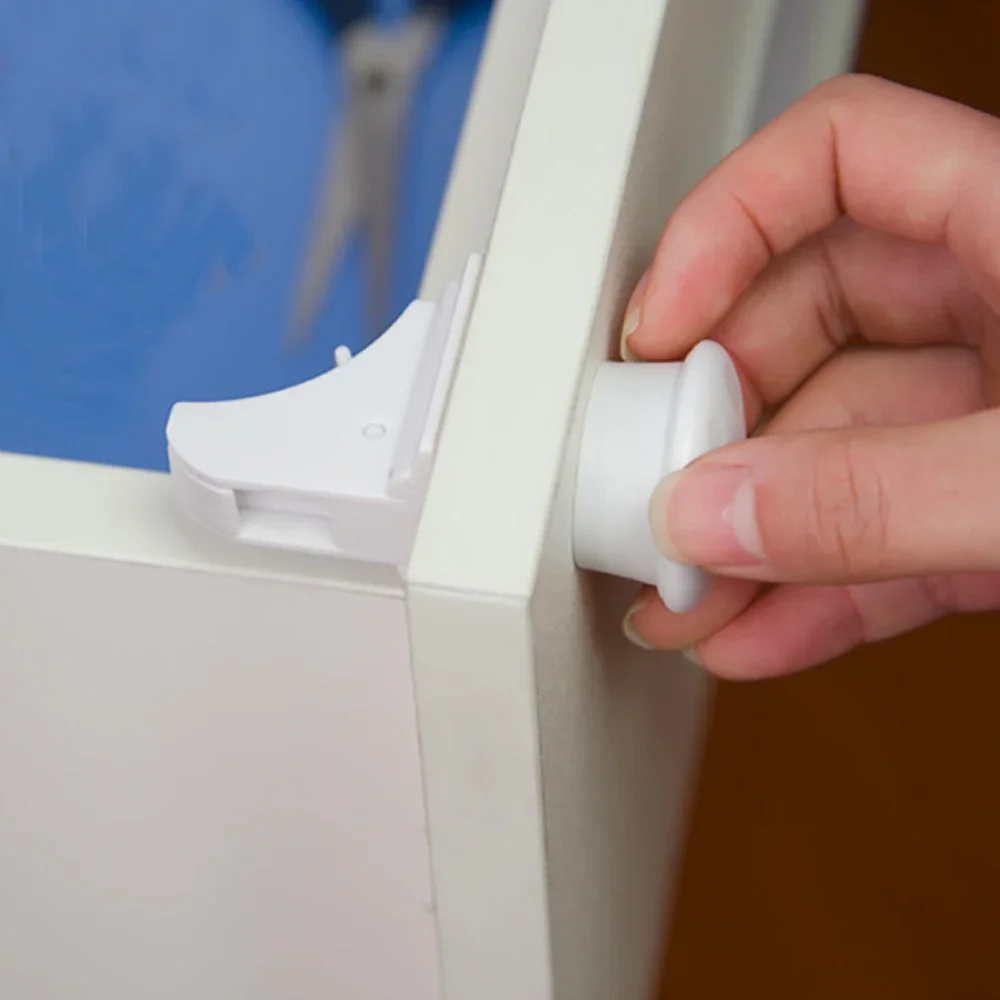When you become a parent, your world shifts dramatically. Suddenly, every small item in your home—once mundane—is now a potential hazard for your curious little explorer. One of the most overlooked areas of childproofing is cabinetry. Children are innately curious, and cabinets often house everything from cleaning supplies to sharp objects. This article is a comprehensive guide to cabinet locks for babies, detailing their importance, types, installation methods, and considerations to keep in mind.
The Importance of Cabinet Locks
Cabinet locks serve a dual function—keeping dangerous items out of reach and providing peace of mind to parents. When babies start crawling and walking, they access areas previously out of sight. Standard cabinets and drawers can contain various hazards, including cleaning products, medicines, and sharp tools. According to the National Safety Council, thousands of children are injured each year due to access to hazardous items that could have been secured. Installing cabinet locks significantly reduces the likelihood of accidents and allows parents to focus on other aspects of care, knowing that their environment is safer for their child.
The importance of cabinet locks extends beyond just immediate safety; it also promotes independence. Health and safety guidelines stress the importance of creating a safe environment where children can learn to explore. With cabinet locks, you gain a tool that assures safety without hampering your child’s natural curiosity. Consequently, safety and freedom coexist, providing you with an ideal setting for your child’s growth and development.

Types of Cabinet Locks
There are several types of cabinet locks available, each designed with unique features to suit different needs. The choices range from simple slide locks to advanced magnetic locks. In general, the primary categories are:
- Latch Locks: These are simple mechanisms that latch shut and require a good amount of force or coordination to open. They often involve a lever or a slide that can be secured manually.
- Magnetic Locks: These locks rely on a magnetic key to unlock them. This type is often hidden from sight, making it challenging for children to figure out how to open them. They provide an added layer of security but do require parents to keep the key nearby.
- Sliding Locks: These locks slide into position and can be easily installed on the side of the cabinet. While generally straightforward, they can be easily disengaged by older children if not positioned properly.
- Pin Locks: These involve inserting a pin into a hole, requiring specific pressure to disengage. They can be easily installed but may be more complex for some adults to operate.
- Chain Locks: This option is often seen on doors but can be adapted for cabinets as well. A metal or plastic chain keeps the cabinet closed while allowing limited opening.
Factors to Consider When Choosing Cabinet Locks
When selecting cabinet locks, several factors should influence your decision. These include material quality, durability, installation ease, and, most importantly, child safety.
- Material Quality: High-quality materials ensure that the lock can withstand a child’s efforts to open it. Cheaper, lower-quality locks might break easily, making them ineffective. Look for products made from robust materials like reinforced plastic or steel.
- Durability: Babies grow quickly, and their curiosity can lead to determined attempts to open a lock. Therefore, choose a lock that can endure wear and tear over time. Consider reading reviews or asking other parents for recommendations.
- Ease of Installation: Some locks may require tools for installation, while others can be easily affixed with adhesive strips. If you’re not handy, look for locks that promise simple, tool-free installation.
- Safety Regulations: Always check for child safety ratings and certifications. Look for locks that comply with relevant safety standards to ensure you’re making a safe choice.
- Ease of Use for Adults: Locks should ideally be secure yet simple enough for adults to operate quickly. It can be frustrating to struggle with a lock when you’re in a hurry. Look for features that prioritize adult convenience while maintaining child safety.

Installation Methods for Cabinet Locks
The installation process for cabinet locks varies based on the type chosen. Here’s a general guide to help you understand how to install different types of locks.
- Latch Locks: Generally, these require you to drill holes for secure installation. Align the lock and mark the holes before drilling. Once drilled, attach the lock and the striker plate using screws. Make sure the latch engages smoothly.
- Magnetic Locks: These usually involve adhesive strips for installation. Clean the surface before applying, then position the lock and the magnetic key holder. Make sure the key is stored in a place that is both convenient for adults and out of reach for children.
- Sliding Locks: For a sliding lock, position the lock on the side of the cabinet and attach using screws, following the instructions provided in the packaging. Test the sliding mechanism before starting to ensure it closes securely.
- Pin Locks: Installation involves drilling a hole into the cabinet and attaching the lock accordingly. Typically, these are straightforward once the hole is drilled.
- Chain Locks: Attach one end of the chain to the cabinet door and the other to the frame using screws. The chain allows for a limited opening, preventing access to the cabinet’s interior.
Maintenance and Monitoring of Cabinet Locks
Some parents may forget that cabinet locks require ongoing monitoring and maintenance. Over time, locks can wear out or may become ineffective, especially if they are poorly installed or constructed from lower-quality materials. Regularly inspect cabinet locks for signs of wear or damage. If you notice any deterioration, consider replacing them promptly.
You may also want to consider changing the locks when your child reaches a certain age, as older infants may require different levels of protection or may no longer need locks on some cabinets. Transitioning to childproof products that work for older children can create a balance between safety and autonomy.

Popular Brands and Products
Several brands specialize in child safety products. Some of the popular options include:
- Safety 1st: Known for its wide range of baby-proofing items, their cabinet locks are widely used and well-reviewed.
- Munchkin: This brand promotes innovative safety items, and their cabinet locks are both functional and easy to install.
- KidCo: They offer high-security options for cabinets and drawers, catering to families needing extra peace of mind.
- The First Years: They have affordable yet effective lock options designed with both parents and children in mind.
Child Safety Beyond Cabinet Locks
While cabinet locks are an essential aspect of child safety, they are just one piece of the puzzle. A comprehensive safety plan includes securing other areas of your home as well.
- Cover Electrical Outlets: Use outlet covers to prevent accidental shocks. This is an area that might often be overlooked but is crucial for child safety.
- Anchor Heavy Furniture: For homes with toddlers, securing heavy items such as bookshelves and TVs to the wall is essential to avoid tipping hazards.
- Secure Windows: Install window locks or guards to prevent accidental falls. Simple precautions can make a world of difference.
- Use Safety Gates: For stairs and areas you want to keep off-limits, safety gates prevent accidental access.
- Education and Supervision: Perhaps the most crucial aspect of child safety lies in continuous monitoring and educating your child. As they grow and learn about boundaries, your guidance is vital.
Conclusion
Child safety should always remain a priority as you navigate the beautiful chaos of parenthood. Cabinet locks offer an effective, practical solution to protecting your child from hidden hazards. The variability in types and the ease of installation mean there’s a product suited for every family’s needs.
Don’t underestimate the importance of thorough research when selecting locks, and ensure you follow proper installation protocols. Regular maintenance and monitoring of locks, combined with safety measures throughout your home, will further enhance your child’s safety.
In conclusion, the key to child safety is vigilance, preparation, and an understanding of the world’s hidden dangers. While no single measure can guarantee complete safety, implementing strategies like cabinet locks ensures that you are doing your utmost to protect your precious gift—from household items to everyday activities. Remember, safety first!
